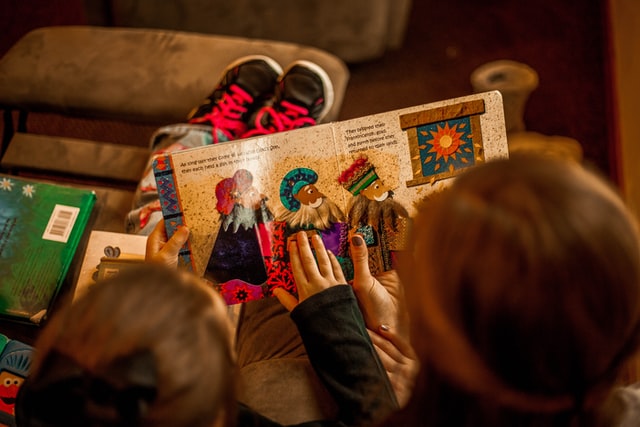So you’ve written a children’s book. Congratulations! The next step now is to publish and promote it.
But as a young, budding author, you may not have the budget to hire a professional publisher. And who has the time to go through all the hoops big publishing houses make you go through?
The solution, then, is self-publishing. This might sound like a daunting task in itself, but hey, you’ve done the difficult part already. Now you just have to tie some loose ends and get your book on the shelves.
Self-publishing is perfect for anyone who doesn’t want their creativity stifled. Without checks and approval systems, you can go as wild as you want with your content and book cover. Keeping in mind what the children want, of course!
Moreover, with self-publishing, you can cut through a lot of the red tape that ends up delaying your launch. And for an author who’s really excited to show the world what they’ve written, this should be the most enticing reason to self-publish.
To help you navigate the self-publishing process, we’ve compiled a list of things you will have to do. Tick them off your list one by one and you’ll be ready to launch your book!
1. Edit your manuscript
After you’ve written your content, go through it again. And again. You might be inclined to stop after one or two proofreads, but remember, professional publishers are much more ruthless about this.
Plus, during the publishing process, editing is a slightly more nuanced thing to do. These are some of the questions you need to ask before finalizing your manuscript:
- Who’s your target audience (ages, learning levels)?
- Is the content in your book geared towards that audience?
- Are you using the right words?
- Is your story easy to navigate?
- Is there a lesson at the end of it?
You may have answered some of these questions before you started on your book, but it’s useful to go through them again to make sure you haven’t missed anything out.
Remember, research is key. Research every aspect of your self-publishing journey. Gather data for children’s books. Go through best selling books which have the same target audience. See what sells and what doesn’t. And then edit accordingly.
2. Design a book cover
This is really important because the cover is what’s going to catch a kid’s eye. Even if your book will solely be available online, you need an enticing cover to grab buyers’ attention. You know how they say “don’t judge a book by its cover”? Well, in this case, that’s simply not true.
Your cover needs to be filled with colors and excitement. If you have main characters, they should be front and center. Also, don’t forget to add a catchy title and your name. Most of all, remember to tie it all together in an aesthetically appealing way.
Now here’s the best part. You don’t need a fancy and expensive designer to make your cover. There are plenty of sites online that allow you to make a free book cover design seamlessly. For instance, PosterMyWall has an incredible book cover maker that you can use to make your cover – both from scratch and with a template.
3. Make sure your illustrations are high quality
Regardless of whether you did your own illustrations for your book or hired an illustrator, remember that they must be high resolution. No kid wants to read a book with blurry, generic or unclear images. Because let’s face it, that’s not fun.
To that end, make sure your prints are high quality too.
Most important, use bold and bright colors because those are most attractive to a kid. Colors like blue, red, orange, and yellow are always winners.
4. Focus on typesetting
So, what is typesetting and why is it important? Basically, this consists of your book layout design. This includes margin size, font size, font weight, lettering, and headings.
You see, each aspect of your book is a way to grab and keep a young reader’s attention. Too many words on a page? Looks boring to a kid. Words and letters not spaced out wide enough? The kid’s now confused.
You have to make sure that every element of your book is as enticing as possible. The specifics will depend on the reading level you’re targeting, but here are some general typesetting rules to remember:
- Use big letters, bold where appropriate
- Use a kid friendly font like Comic Neue
- Keep a 1:1 ratio for text and illustrations on each page
- Keep the margins wide
- Use headings but only where appropriate
5. Get an ISBN
An ISBN is the international standard book number. And you will need it to promote and sell your book.
Getting your own ISBN is actually pretty neat because it ensures that your book is yours and no one else’s.You can get your ISBN online for a very nominal fee.
6. Copyright your book
Copyrighting is one of the most important things you need to do before you launch. This will ensure that your work remains your intellectual property, and is not copied by anyone else.
It’s important that you don’t launch your book before getting it copyrighted. You can get your copyright online.
Legalities might seem slightly daunting especially if you have experience, but don’t worry. The process is very smooth and once you get the copyright, you can take comfort in the fact that no one can steal your story from you.
7. Run a focus group
Get an idea of how your book will be received by your target audience by running a focus group for your book.
You can find participants easily online, through your social media network, or through friends and family. Since your focus group will mainly consist of children, you will also have to let parents or guardians into the group. This can work to your advantage though. Since parents are the ones who are going to be purchasing the book, getting their opinion would be beneficial.
Here are some questions you might want to ask the kids:
- Do they like the colors?
- Does the story make sense?
- Who was their most favorite and least favorite character?
- Did they enjoy the book?
And here are some questions for the parents:
- Did the story have a moral in the end?
- Was there anything in the story that they didn’t approve of?
- Would they buy this book for their children?
8. Think about distribution
Do some research and figure out what form you want to publish your book in.
An ebook would be a nice, cost effective way to publish. And illustrations would be a lot smoother too. However, kids are less likely to learn by staring at a screen. Not to mention the fact that parents might be hesitant to get their kids a book that would require them to stare at a screen for such a long time.
On the other hand, a printed book would sell more because it would be a tangible item. People will probably be more likely to buy them as gifts too. However, this is the more expensive option.
Another thing to think about (if you’re printing your book) is whether you want to ready your book in bulk or get it printed on demand. If you’re considering the latter, here are some great print-on-demand book services that you should check out:
There’s no right answer for these concerns. What you decide will depend entirely on your own experience in the publishing process. However, these are some things that you must consider.
Final thoughts
Self-publishing is a big step, but it’s definitely not impossible. In fact, with the right tips and strategies, you can even have fun with it. The main takeaway here is to be thorough at every step. Kids are very particular about what they like, and you need to make sure that they like your book.
Happy publishing!















